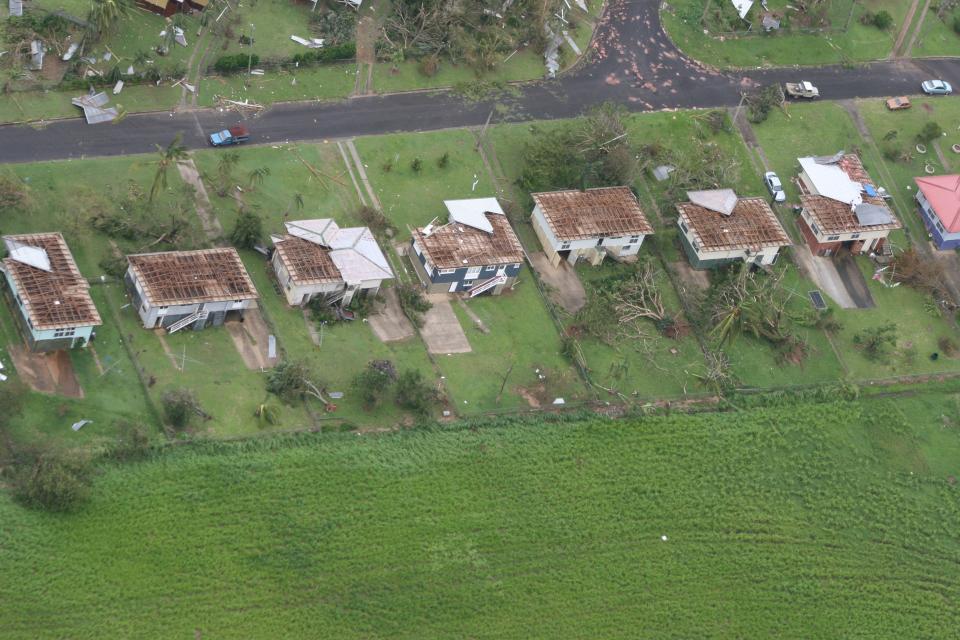
PUBLICATIONS
Published works

Simulation and analysis of surface wind fields during landfalling tropical cyclones
| Title | Simulation and analysis of surface wind fields during landfalling tropical cyclones |
| Publication Type | Thesis |
| Year of Publication | 2019 |
| Authors | Kloetzke, T |
| Academic Department | Civil Engineering |
| Degree | Doctor of Philosophy |
| Date Published | 06/2019 |
| University | University of Queensland |
| City | Brisbane |
| Thesis Type | Doctorate |
| Keywords | building resilience, cyclones, Emergency management, severe storms, Simulation modelling, strong winds |
| Abstract | Tropical cyclones (TCs) are rotating atmospheric vortices characterised by high wind speeds thatpose a major threat to people and infrastructure in coastal communities. To minimise their impacts,the winds in the lowest part of the TC boundary layer (TCBL) must be adequately understood. Thisunderstanding enables engineers to make rational decisions around building design in these regionsand allows meteorologists to improve their forecasts. Of particular importance is how the TCBL ismodified when abrupt changes in surface terrain conditions occur, such as during landfall, which cansignificantly alter the physical structure of a TC. Although near-surface TC wind data has begun to becaptured through coordinated field campaigns in, for example, the USA and Australia, there is littleexplicit information on how the TCBL is modified during landfall or in the vicinity of other suddenchanges in land surface conditions. This thesis sets out to investigate this process through, 1) analysisof near-surface wind observations, and 2) numerical simulation of idealised TCs.To explore how near-surface turbulence is modified, the present study analysed observational TCwind records at measurement heights of 2.25 m, 3 m, 5 m, and 10 m collected during 11 TCs from theFlorida Coastal Monitoring Program (FCMP), StickNet, and the Surface Weather Information Relayand Logging network (SWIRLnet). These low-level records will be analysed to assess their turbulentcharacteristics and the response of these characteristics to sudden changes in land surface. Resultswere compared with traditional engineering models (AS/NZS1170.2, ESDU) predicting turbulencetransition in non-TC environments to assess their efficacy in TC environments. Results show thatturbulence statistics require about 2 km to reach equilibrium with the underlying terrain, independentof measurement height and upstream terrain. Engineering models tested were found to over predictturbulence intensities in a TC environment. A simple empirical model for estimating the transition ofturbulence intensity following a single change in terrain is proposed.Exploring more broadly how the mean TCBL structure is modified during TC landfall, this thesisalso uses hybrid real-idealised Weather Research and Forecasting (WRF) numerical simulations toinvestigate the mean TCBL response during landfall. This numerical modelling method combines anidealised spun-up TC and a real world environment to undertake a series of parametric simulationswhere idealised TCs impact coastlines with a range of terrain conditions. These tests systematicallyexplore how sudden changes in terrain (e.g. sea to different land surfaces) influence bulk stormcharacteristics (e.g. TC size, radius of maximum wind), surface wind footprints, and vertical TCwind profiles in different parts of simulated TCs. Generated TC wind profiles are also compared withobservational dropsonde data as well as one existing analytical model. Increased surface roughnessover land was found not to deflect the TC track prior to landfall, but was shown to lower TC intensity.Increased surface roughness was also found to reduce maximum surface level wind speeds by up to70% within 12 hours after TC landfall. Modelled TCBL profiles over water follow a logarithmic windprofile up to the height of maximum wind speed, which increases with TC radius. TCBL profiles overland also exhibit a logarithmic wind profile but wind speeds decay faster particularly closer to thesurface. |
Published Works


